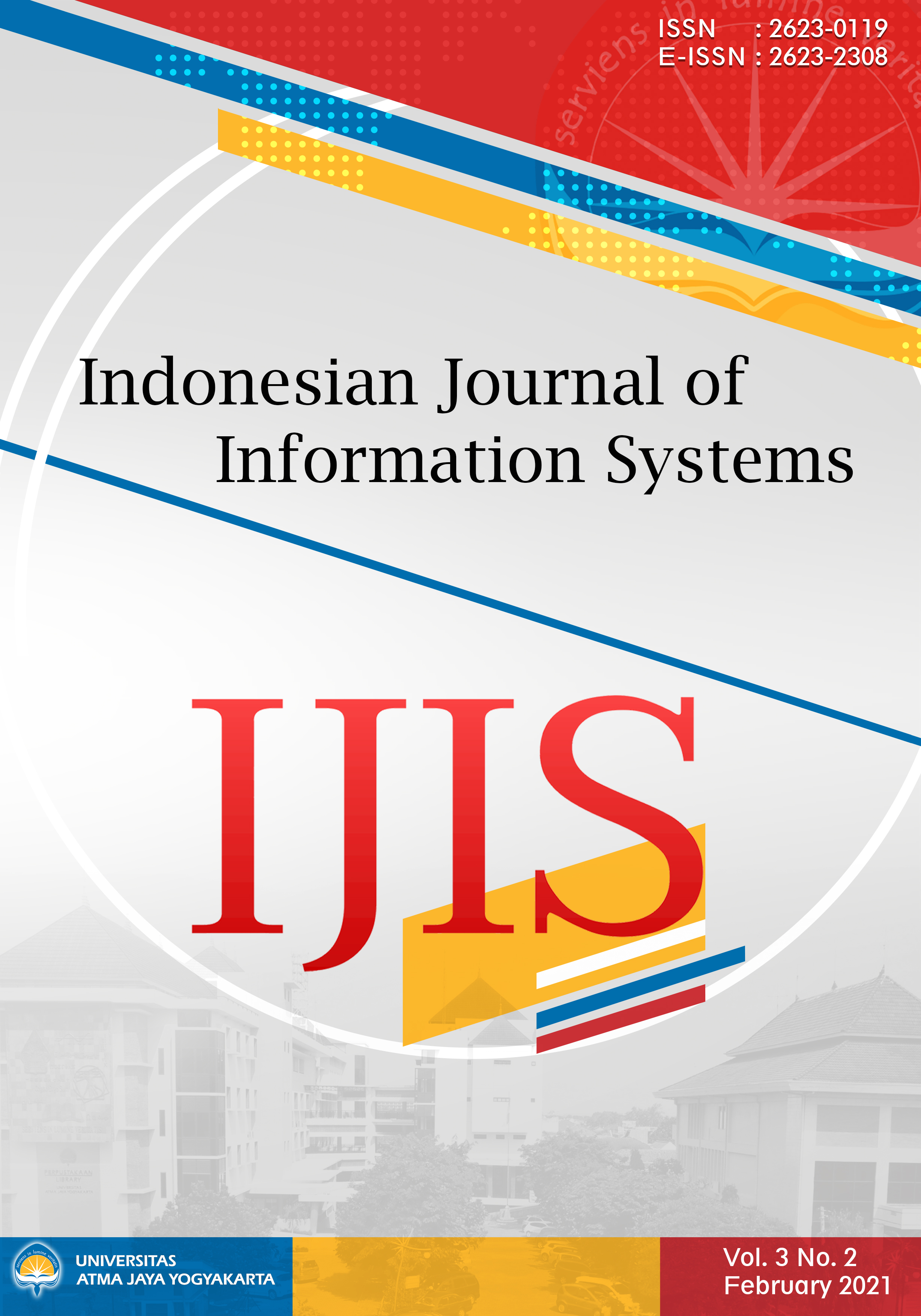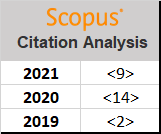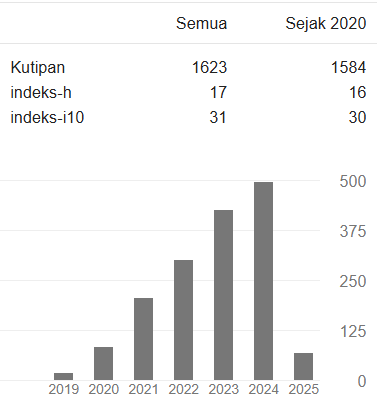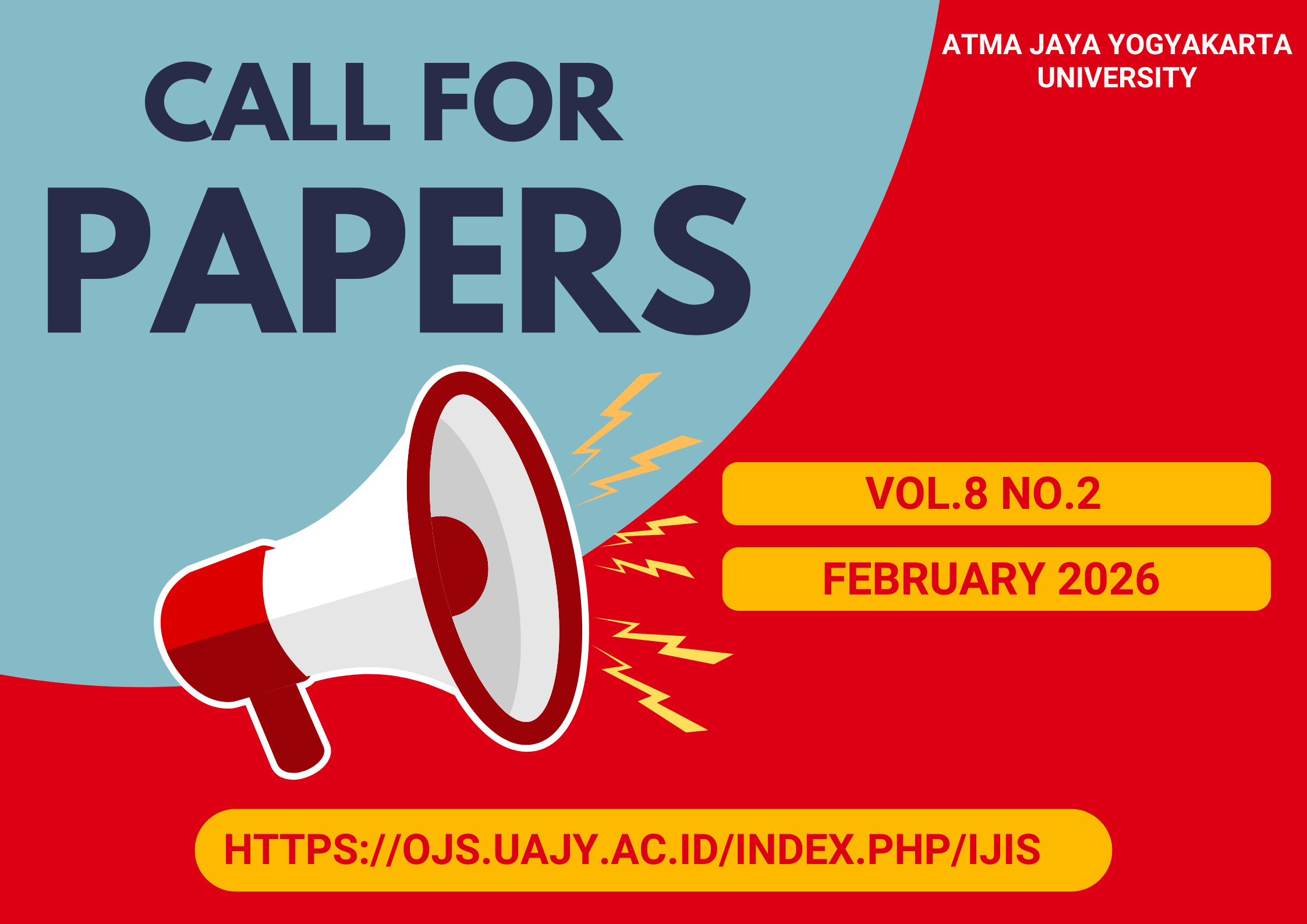Prototype of Control and Monitor System with Fuzzy Logic Method for Smart Greenhouse
DOI:
https://doi.org/10.24002/ijis.v3i2.4067Keywords:
Arduino, IoT, Greenhouse, Fuzzy, BlynkAbstract
To increase plant productivity, greenhouse buildings are needed that can protect plants from external factors and integrated with smart systems that can be monitored anytime and anywhere, and can provide optimal plant needs automatically. In this research, a system was built that can monitor greenhouse conditions in real time anywhere through Blynk application with IoT concept, as well as a system that can control output automatically with fuzzy logic method. The focus of control on this research is the duration of watering with Mini Water Pump and light intensity setting with LED Strip. This system is also equipped with FAN that can be active when the temperature is 31°C or more. Parameters used in this system are DHT22 sensor (air temperature and humidity), Soil Moisture sensor, Water Level sensor ,LDR sensor (light intensity) and RTC DS3231 (Real Time Clock), which is controlled with Arduino Mega 2560 microcontroller. In the test results obtained accuracy on fuzzy logic water pump by 93.1% and accuracy on fuzzy logic LED Strip by 99.6%. In the test results of the existing parameters, the results get a fairly optimal reading.References
V. S. Jahnavi and S. F. Ahamed, “Smart Wireless Sensor Network for Automated Greenhouse,” IETE J. Res., vol. 61, no. 2, pp. 180–185, Mar. 2015.
J. E. Informatika and T. Mary, “Jurnal Edik Informatika.”
R. I. S. and H. Hartono, “Rancang Bangun Pulse Width Modulation (PWM) Sebagai Pengatur Kecepatan Motor DC Berbasis Mikrokontroler Arduino,” J. Penelit., vol. 3, no. 1, pp. 50–58, 2018.
R. Syam, W. H. Piarah, and B. Jaelani, “Controlling Smart Green House Using Fuzzy Logic Method,” Int. J. Smart Mater. Mechatronics, vol. 2, no. 2, pp. 116–120, 2016.
R. Friadi and J. Junadhi, “Sistem Kontrol Intensitas Cahaya, Suhu dan Kelembaban Udara Pada Greenhouse Berbasis Raspberry PI,” J. Technopreneursh. Inf. Syst., vol. 2, no. 1, pp. 30–37, 2019.
A. Wardani, “Purwarupa Perangkat IoT untuk Smart Greenhouse Berbasis Mikrokontroler,” e-Proceeding Eng., vol. 5, no. 2, pp. 3859–3875, 2018.
M. Jur et al., “PEMBERIAN CAHAYA TAMBAHAN DENGAN LAMPU HID DAN LED UNTUK MERESPON WAKTU PEMBUNGAAN TOMAT CHERRY (Solanum Liycopersicum var cerasiforme) DI DALAM RUMAH TANAMAN,” Cocos, vol. 1, no. 8, 2017.
Lutfiyana, N. Hudallah, and A. Suryanto, “Rancang Bangun Alat Ukur Suhu Tanah, Kelembaban Tanah, dan Resistansi,” J. Tek. Elektro, vol. 9, no. 2, pp. 80–86, 2017.
I. A. Saputro, J. E. Suseno, and E. Widodo, “Rancang bangun sistem pengaturan kelembaban tanah secara real time menggunakan mikrokontroler dan diakses di web,” Youngster Phys. J., vol. 6, no. 1, pp. 40–47, 2017.
I. Susilawati, Wardah, “Pengaruh Berbagai Intensitas Cahaya Terhadap Pertumbuhan Semai Cempaka (Michelia champaca L.) Di Persemaian,” J. For. ISSN 1693 - 5179, vol. 14, no. 1, pp. 59–66, 2016.
J. Arifin, L. N. Zulita, and Hermawansyah, “Perancangan Murottal Otomatis Menggunakan Mikrokontroller Arduino Mega 2560,” J. Media Infotama, vol. 12, no. 1, pp. 89–98, 2016.
F. Puspasari, T. P. Satya, U. Y. Oktiawati, I. Fahrurrozi, and H. Prisyanti, “Analisis Akurasi Sistem sensor DHT22 berbasis Arduino terhadap Thermohygrometer Standar,” J. Fis. dan Apl., vol. 16, no. 1, p. 40, 2020.
A. R. Putri, Suroso, and Nasron, “Perancangan Alat Penyiram Tanaman Otomatis pada Miniatur Greenhouse Berbasis IOT,” Semin. Nas. Inov. dan Apl. Teknol. di Ind. 2019, pp. 155–159, 2019.
U. S. Khair, “Alat Pendeteksi Ketinggian Air Dan Keran Otomatis Menggunakan Water Level Sensor Berbasis Arduino Uno,” Wahana Inov. J. Penelit. dan Pengabdi. Masy. UISU, vol. 9, no. 1, pp. 9–15, 2020.
Y. Widiawati, P. H. Islam, J. T. Elektro, P. N. Jakarta, and I. L. Belakang, “Pemanfaatan RTC ( Real Time Clock ) DS3231 Untuk Menghemat Daya,” Pros. Semin. Nas. Tek. Elektro, vol. 3, pp. 287–289, 2018.
R. N. Farid, S. Karim, G. Eddy, and W. Pratama, “STUDI PENERAPAN FUZZY LOGIC PADA PENGATURAN KECEPATAN MOTOR DC MENGGUNAKAN ARDUINO UNO AT 328,” vol. 2, no. 1, pp. 33–42, 2016.
Downloads
Published
How to Cite
Issue
Section
License
Indonesian Journal of Information Systems as journal publisher holds copyright of papers published in this journal. Authors transfer the copyright of their journal by filling Copyright Transfer Form and send it to Indonesian Journal of Information Systems.

Indonesian Journal of Information Systems is licensed under a Creative Commons Attribution-NonCommercial 4.0 International License.

















